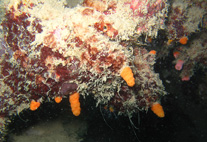Abstract
The ultrastructure of the fossula spongiosa and pretarsus of adult Haematoloecha nigrorufa (Stål) (Heteroptera: Reduviidae: Ectrichodinae) was examined for the first time using scanning electron microscope. The fossula spongiosa of H. nigrorufa is located on the ventral surface of the distal part of the tibia of both the fore- and midlegs. The area of the fossula spongiosa on the female foreleg is approximately 251338.88 μm2, while the area of the fossula spongiosa on the male foreleg is markedly smaller, only about 196548.98 μm2. For both genders the area of the fossula spongiosa on the foreleg is approximately 1.50 times as large as that on the midleg. Externally, the ventral surface of the fossula spongiosa is covered by a large number of tenent hairs that are evenly interspersed with a few mechanosensory setae. Each tenent hair consists of two parts: a hair shaft and an apical plate. A tenent hair is 22.58±1.60 μm in length, 1.90±0.09 μm in shaft diameter, and 10.90±0.63 μm2 in apical plate area. Morphologically, the tenent hairs are similar and constitute a nearly uniform hair array on the ventral side of the fossula spongiosa. The density of tenent hairs is about 4.46±0.35 hairs per 100 μm2 and the total number of tenent hairs is more than ten thousand on the fossula spongiosa of the female foreleg. These tenent hairs are presumed to function as adherence during locomotion or prey capture of the assassin bugs. In addition, scanning micrographs and descriptions for the pretarsus are also given.

